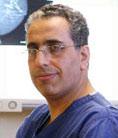Medical Qualifications
Professor Kefah Mokbel qualified in 1990 from the London Hospital Medical College; during his time at university he received several awards and was awarded the highest result of his year. He went on to receive Fellowship of the Royal College of Surgeons, England in 1994 and followed this with a Master of Surgery degree from the Imperial College of Science, Technology and Medicine. For his Master's degree he carried out research into the molecular biology of breask cancer.
Medical Experience
Prof Mokbel holds a number of prestigious posts within London, including Professor of Breast Cancer Surgery at The Brunel Institute of Cancer Genetics and Pharmacogenomics, Honorary Consultant Breast Surgeon at St George's Hospital, and Consultant Breast Cancer Surgeon at the London Breast Institute at The Princess Grace Hospital, and works at Parkside Hospital in Wimbledon. Prof Mokbel is also President of Breast Cancer Hope, a British charity focused on improving the quality of life in women with breast cancer.
He has championed a number of pioneering techniques in breast cancer treatment, not least of all a method known as mammary ductoscopy. Alongside his interest in the prevention of breast cancer, Prof Mokbel specialises in the treatment of benign breast conditions such as breast cysts and fibroadenomas.
Prof Mokbel has been ranked as one of the top 5 breast cancer specialists in the UK and amongst the top 25 in the world. He says that the reason why he has such a good level of treatment outcome is because of his attitude to the care of his patients.

